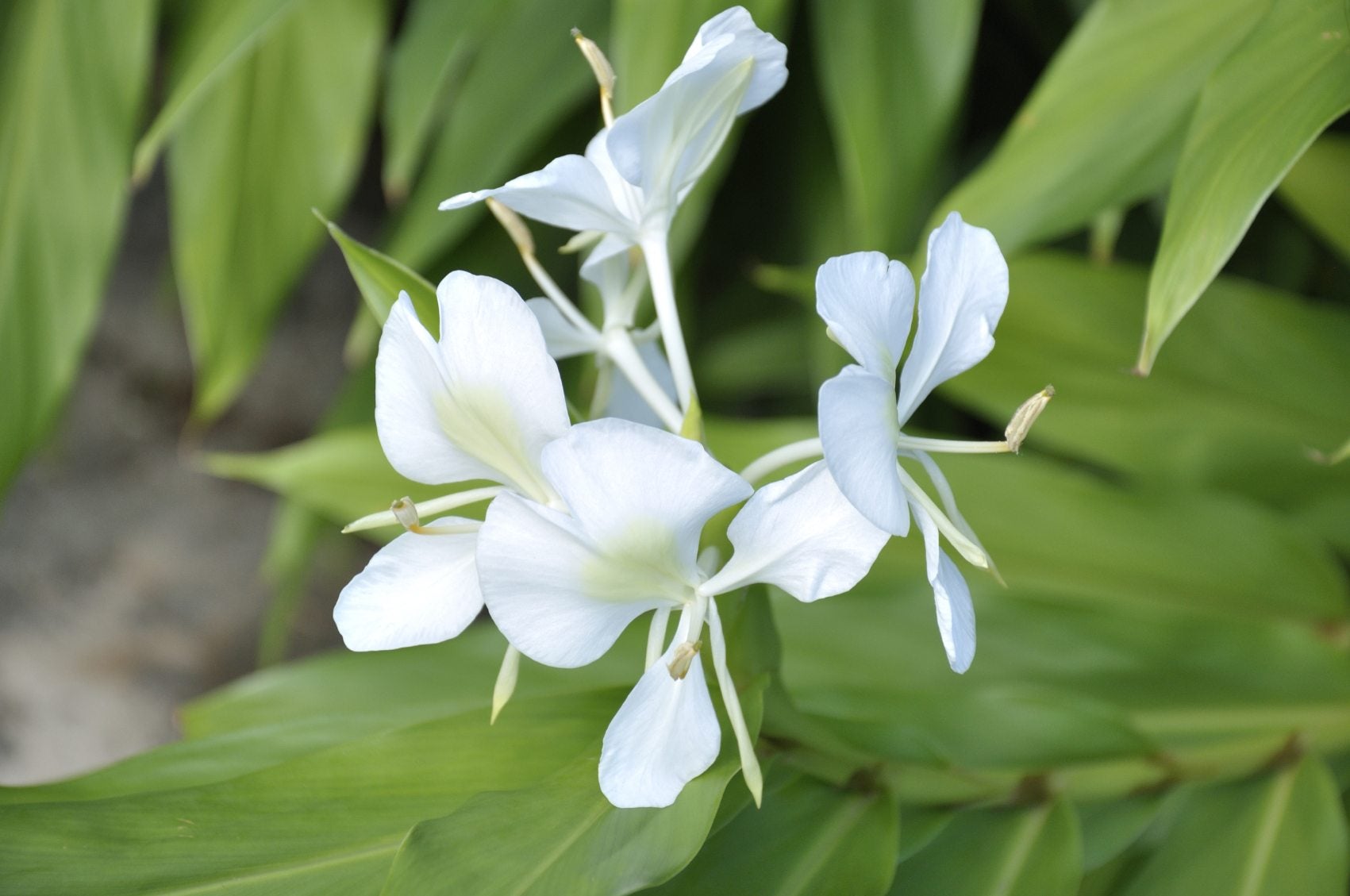Hedychium Ginger Lily Info: Tips On Caring For Butterfly Ginger Lilies


Hedychium are native to tropical Asia. They are a group of astounding floral forms and plant types with minimum hardiness. Hedychium are often called butterfly ginger lily or garland lily. Each species has a unique, floral shape but characteristic "canna-like," large foliage. Hedychium originates in areas where monsoons are common and heavy, moist, warm tropical air is the norm. Try to mimic their native growing conditions for the healthiest Hedychium plants.
Hedychium Ginger Lily Info
Tropical plants in the garden or in containers bring to mind snowy white beaches, dense, lush rainforests, and exotic sights and scents. Hedychium is a tropical plant that is hardy in the United States Department of Agriculture zones 8 to 11. For northern gardeners, butterfly ginger plants can be grown in containers and brought indoors for the cool seasons. This is a true ginger in the Zingerberaceae family, but the rhizomes are not the source of the culinary spice, ginger. The butterfly ginger lily is a half-hardy, perennial, flowering plant. The blooms are strongly scented and quite intoxicating. The plants are part of the marginal rainforest community in tropical Asia. As such, providing partial shade and organic-rich, moist soil is key to growing Hedychium ginger lilies. Several species are available for the home gardener. They produce spikes of flowers in hues of red, white, gold, and orange. The flower sizes vary among the species, but each has a deep spicy scent. Flower spikes may be up to 6 feet (2 m.) tall, and each flower lasts for only one day. The foliage may get 4 to 5 feet (1-1.5 m.) tall and has a wide, sword-like form. Foliage will persist until a cold snap kills it to the ground. An important bit of Hedychium ginger lily info is that the plant should not be grown in Brazil, New Zealand, or Hawaii. It is an invasive species in these areas and has naturalized in some regions.
Growing Hedychium Ginger Lilies
Hedychium plants thrive in partial shade/sun in soil that has excellent drainage but remains moist. The rhizomes should not be in boggy soil, but the plant requires consistent water. You can plant the rhizomes for quicker blooms or sow the seed indoors and transplant them outside. These seedlings will not bloom in the first year. Seeds for plants started outside in warm climates should be planted in autumn, 18 to 36 inches (46-91 cm.) apart, and covered with 1/4 inch (6 mm.) of soil. Thin the seedlings, if necessary, in spring. Young butterfly ginger plants will benefit from a good flowering plant food in spring.
Caring for Butterfly Ginger Lilies
Hedychium needs even moisture for the best performance. When the flowers are all spent, cut off the stem to allow the plant's energy to direct towards the rhizomes. Keep the foliage well-tended until it dies back, as it will keep collecting solar energy to store for the next season's bloom. In spring, divide the rhizomes of plants, ensuring that each has a growth node and roots before planting them separately for a new batch of tropical flowers. In cold climates, dig up the rhizomes in late summer to early fall, brush off the soil, and store them in peat moss inside paper bags where temperatures are cool but not freezing and the air is dry. Replant in early spring in containers or prepared soil and get ready to enjoy one of the headiest floral displays you can find outside of a tropical region.
Sign up for the Gardening Know How newsletter today and receive a free copy of our e-book "How to Grow Delicious Tomatoes".

Bonnie Grant is a professional landscaper with a Certification in Urban Gardening. She has been gardening and writing for 15 years. A former professional chef, she has a passion for edible landscaping.